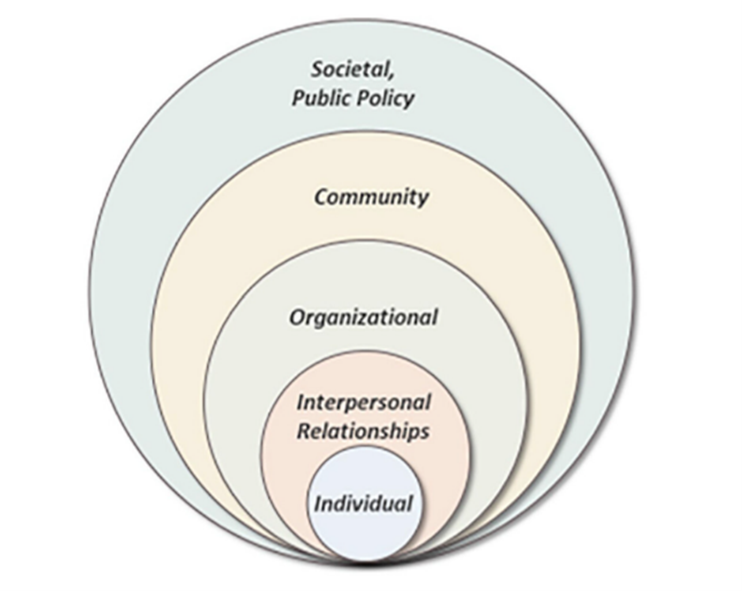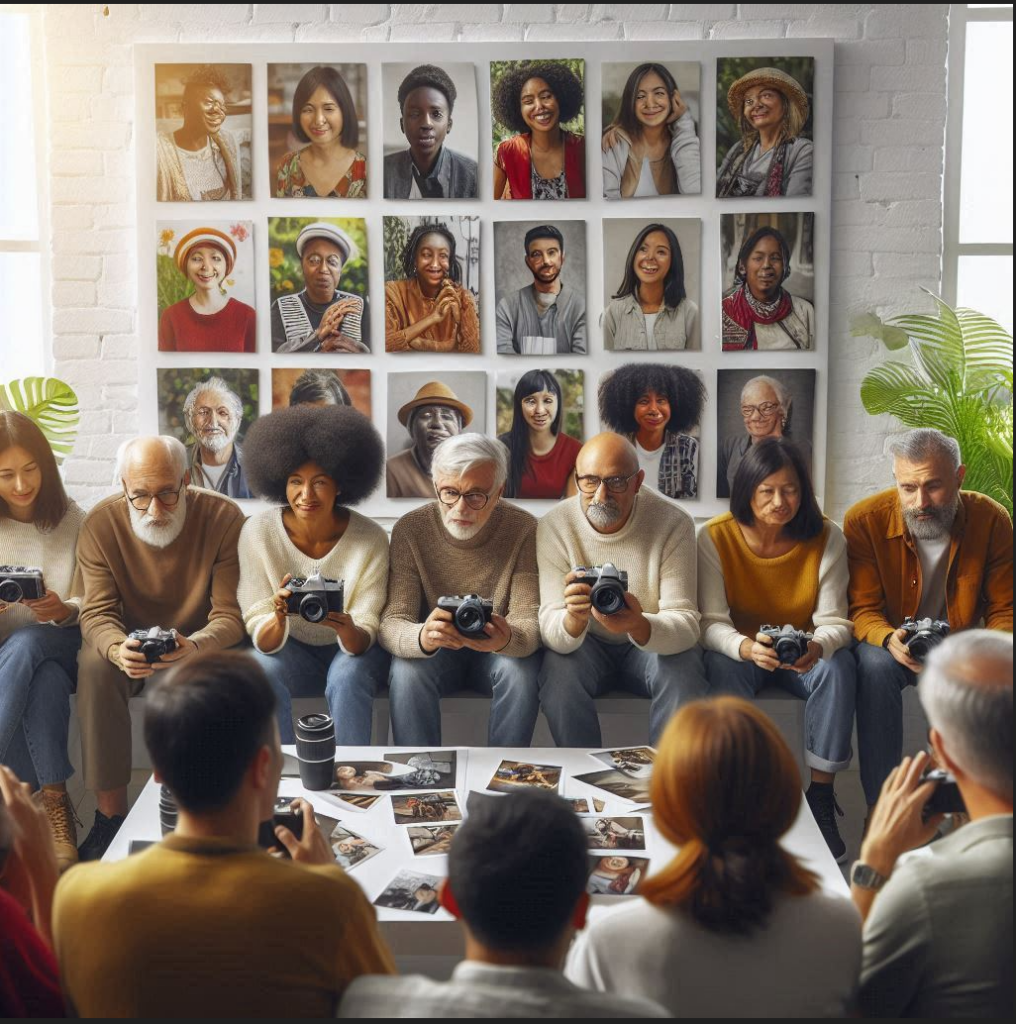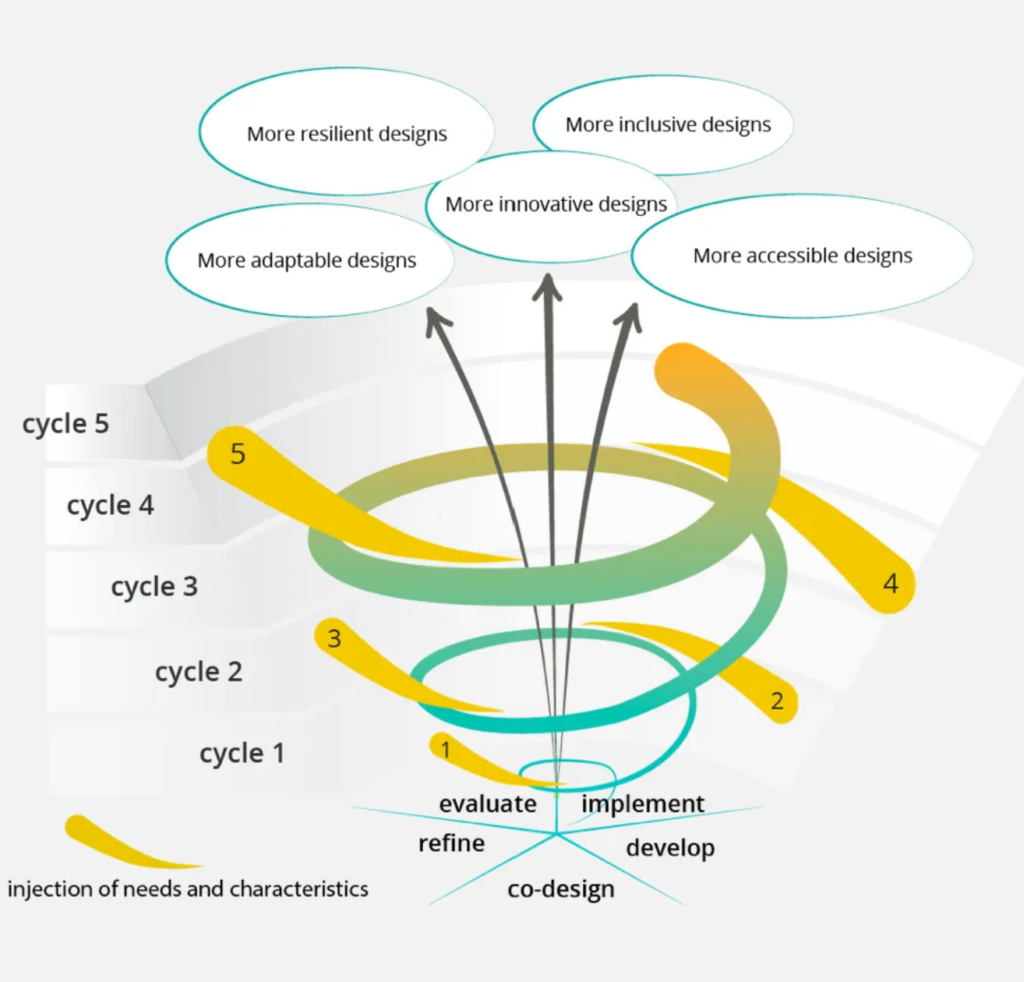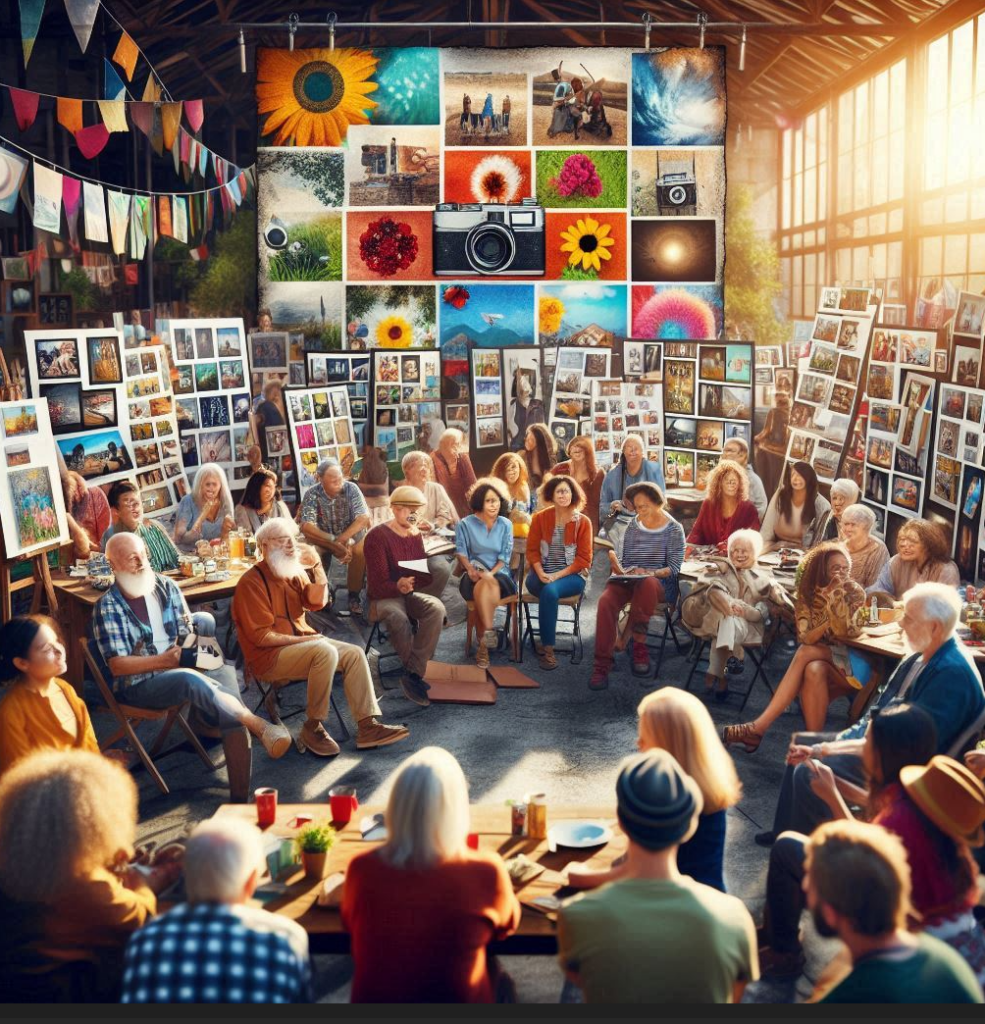The research method of Photovoice, traditionally a process where photos are taken and shared to encourage dialogue within a marginalized community (Huber et al., 2023), can be used as an entry point to empower students and give voice to their learning needs. Huber et al. note that “the method has evolved over the years into different forms and variations. Photovoice has proven to be flexible in its structure” (2023, p. 386). In my EAL class, I am not looking to use this method as a way of initiating social change, but as a reflective activity that students can use to tune into their own learning, tap into their lived experiences, and connect with their classmates and teachers.

Strack et al. (2022) use the Social Ecological Model (see Figure 1) to illustrate how individual behaviours and outcomes are influenced by interrelated layers of the social environment. Photovoice with my learners is focused on the individual – the student themselves, and interpersonal relationships – the relationships with the teacher and classmates. When the primary goal of a photovoice effort is to promote reflection within the participants themselves, at the individual level, Strack et al. categorize it as photovention. It then aims to increase self-esteem and cultural identity as well as enhance individual knowledge, skills, attitudes, behaviours, and health (2022). When considering diverse learners, this process of connecting through photography and reflection can empower them by giving voice to their lived experiences that guide their learning. As Aoki suggests, a photo can present not only past experiences but “[t]he image is the defining instance of re-presentation” (2024, p. 444).
Lauckner et al. (2022) report that, both photography and storytelling (sharing and describing photos in small groups) were considered by some newcomers, as valued recreation experiences in and of themselves, and therefore offer potential opportunities for many newcomers to “build a sense of belonging and connection by focusing attention on everyday enjoyable activities and providing the opportunity to learn and share across cultures”(p. 2117).

“The success of the design is dependent on an awareness of the complex adaptive systems that make up the context of the design and the co-designers (users)”
Treviranus 2018, pp. 6-7
Therefore, for a design to be successful, it needs to consider and understand the complicated and ever-changing systems in which it exists. These systems include the environment and the people who will be using the design. In other words, the designer must be aware of the various factors that influence the design and involve the users in the design process.
I have been thinking about this inclusive co-design in relation to my ELLs and using the technique of photovention on class field trips and other events that we do to build class community.
Context Awareness: The field trip setting offers rich, diverse experiences and environments that are part of the learning context. Understanding these settings is crucial to designing meaningful photovention activities.
Co-design with Learners: Involve adult ELLs in planning and executing the photovention activities. This ensures that their perspectives, needs, and preferences are considered, making the activity more relevant and engaging.
Multimodal Expression: Encourage learners to use photos to capture their experiences, thoughts, and emotions. This visual approach can help overcome language barriers and allows learners to express themselves in ways that might be challenging through text alone.
Cultural Relevance: Ensure that the themes and prompts for the photovention activities resonate with the diverse cultural backgrounds of the learners. This can enhance their connection to the activity and encourage deeper engagement.
Reflective Discussions: Facilitate group discussions where learners share their photos and stories. This collaborative reflection can help build community, enhance language skills, and provide insights into the diverse experiences of the participants.
Technology Access: Ensure that all learners have access to the necessary technology, such as cameras or smartphones, and provide support for those who may need it. This can help bridge the digital divide and ensure equal participation.
Treviranus’ Virtuous Tornado

I wrote of Treviranus’ Virtuous Tornado in the blog post for our EDCI 568 presentation. This is an adaptable system that can expand to accommodate more and more of a student’s missed needs by co-creating and continuously asking “who are we missing?” The imperfect, impermanent and incomplete are appreciated, and mistakes and failures yield the greatest learning. Designs become more resilient, more inclusive, move innovative, more adaptable and more accessible.
So, what if adult ELLs, photovention, and a field trip became caught up in the Treviranus Virtuous Tornado. What could happen? A few thoughts:
Step 1: Start with Learner Insights The learners might identify themes they want to explore through their photographs, such as “community,” “resilience,” or “identity.” They share their lived experiences and explain what these themes mean to them in their unique cultural or personal contexts. More innovative!
Step 2: Collaborative Process Instead of the teacher dictating what or how to photograph, the learners co-create the project. They might brainstorm together and decide as a group which places to visit or objects to photograph. For example, one learner might suggest photographing local landmarks to represent “community,” while another might want to capture gestures of kindness. More inclusive!
Step 3: On-going Evaluation After learners take their initial photographs, they present them to the group for feedback. They might discuss why they chose specific angles or subjects, reflect on what emotions the photos evoke, and suggest improvements or alternative techniques. This iterative feedback loop helps everyone refine their ideas and learn collectively. More adaptable!
Step 4: Building Inclusive Tools and Resources The teacher supports the learners by offering flexible tools, such as smartphones or accessible cameras, and ensuring instructions accommodate various learning strengths (visual, auditory, etc.). They might also incorporate subtitles for any tutorial videos and interactive activities that allow learners to explore photography concepts at their own pace. More accessible!
Step 5: Expanding Perspectives The learners share their completed photo stories with the class, weaving in reflections and personal narratives. The diverse perspectives foster mutual understanding and enrich the learning experience for everyone. More resilient!

Conclusions
By applying these inclusive design principles, I think photovention activities can be seen as a powerful tool for learning, self-expression, and community building among adult ELLs during class field trips and other class events. Through the collaborative, cyclical process of the Virtuous Tornado, learners are empowered to express themselves, and the photovention can evolve to reflect their diverse voices—a hallmark of the Virtuous Tornado approach.
Resources:
Aoki, T. T. (2004). Curriculum in a New Key: The Collected Works of Ted T. Aoki (W. F. Pinar & R. L. Irwin, Eds.; 0 ed.). Routledge. https://doi.org/10.4324/9781410611390
Huber, J. M., Bieling, C., García-Martín, M., Plieninger, T., & Torralba, M. (2023). Photovoice: Participatory research methods for sustainability ‐ toolkit #8. GAIA – Ecological Perspectives for Science and Society, 32(4), 386–388. https://doi.org/10.14512/gaia.32.4.10
Lauckner, H., Gallant, K., Akbari, M., Tomas, G., nee White, T. P., & Hutchinson, S. (2022). Picturing Recreation: Newcomers’ Perspectives on Experiences of Recreation. Journal of International Migration and Integration, 23(4), 2101–2123. https://doi.org/10.1007/s12134-021-00921-2
Strack, R. W., Orsini, M. M., & Ewald, D. R. (2022). Revisiting the Roots and Aims of Photovoice. Health Promotion Practice, 23(2), 221–229. https://doi.org/10.1177/15248399211061710
Treviranus, J. (2018). Realizing the Potential of Inclusive Education. In UNIversal Inclusion. Rights and Opportunities for Students with Disabilities in the Academic Context. Franco Angeli. (In Press). http://openresearch.ocadu.ca/id/eprint/2193/
Treviranus, J. (2019, May 12). Inclusive design: The bell curve, the starburst and the virtuous tornado. Medium. https://medium.com/@jutta.trevira/inclusive-design-the-bell-curve-the-starburst-and-the-virtuous-tornado-6094f797b1bf

Recent Comments